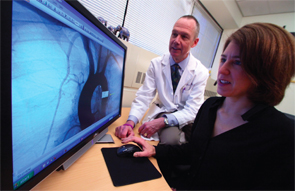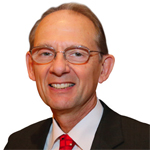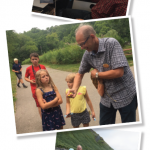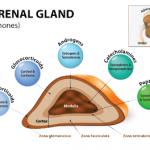
Calvin Brown Jr., MD, received funding from the Foundation to help train the next generation of rheumatology professionals.
Q. How has the Foundation affected your career?
A. In terms of how the Foundation has affected me, there is a global perspective and a personal perspective. Globally, I’m very committed as a rheumatologist and physician [to] taking care of patients [and] advancing the understanding of our diseases. As the biggest private supporter of rheumatology research in the U.S., everything the Foundation does serves that end and helps me help my patients.
The other, more personal, side is that I am co-recipient of a grant that is now fully in the hands of one of my colleagues due to my role in the Foundation. The grant has allowed us to examine lung disease in rheumatoid arthritis (RA), which is one of the major poorly understood comorbidities affecting patients. It’s difficult to find funding to study these topics, and the Foundation has the vision and the resources for us to undertake this project.
We are a lot closer [to a cure now] than we were 30 years ago when the Foundation started its work.
Q. How did you first get involved with the Foundation?
A. I first heard about the Foundation when I joined the ACR as a fellow, nearly 30 years ago in 1986. At that time, the Foundation was just getting off the ground. I didn’t know much about it until I got more into my career and got involved with the American College of Rheumatology. I realized the efforts of the Foundation were critical to the success of our workforce development and our research. As rheumatology chair at Mayo Clinic, I look for funding opportunities for our staff—junior staff in particular—to help them with career development and foster the development of workforce in rheumatology. These are things that the Foundation provides resources and infrastructure for. This realization that we are not going to be able to fund or support all of our research and workforce development through the federal government, but rather increasingly need to be knowledgeable about and rely on efforts of the Foundation [and others], got me very engaged with the mission of the Foundation.
Q. What is your vision for your presidency?
A. Realizing that federal funding for rheumatology research has diminished substantially over the past decade, that our workforce is aging and that our patient population is aging and growing, I want to put my emphasis over the next couple years on expanding the Foundation’s resources. In order to satisfy the needs that we have for funding research and workforce development, we need financial resources. So we must expand our efforts in fundraising. We need to reach out to our patients, our fellow physicians, our fellow rheumatologists and others who have interest in the success of rheumatology research.
Q. What about the Foundation excites you most?
A. The thing that excited me about being involved with the Foundation was realizing that the Foundation is the biggest private funding source of rheumatology research and training in the U.S. As I practice rheumatology and work in my institution, I realize the future of rheumatology depends on having well-trained rheumatology professionals. Our future ability to treat our patients and to conquer our diseases, which is really what we are after—the cure of our diseases—depends on having these advancements in science that the Foundation fosters.
Q. What is your hope for the Foundation over the next 30 years?
A. I wish for greater visibility of the Foundation. I want people to realize that the Foundation is a highly ranked organization that uses the vast majority of its resources for its mission-driven activities—workforce development and research. That realization is what’s behind the Charity Navigator four-star rating, the highest possible, that we have as a foundation.
Q. Why do you believe it’s important for ACR/ARHP members to support the Foundation?
A. The work of the Foundation is fundamental to the success of rheumatology as a discipline and fundamental to the best treatment of our patients. All of us in the ACR/ARHP have this No. 1 goal of making the lives of patients with rheumatic disease better, and the Foundation supports the training and research that make that happen. That’s the key reason why members should support the mission of the Foundation and the work of the Foundation.
We would like to eventually find the cure or cures for these difficult and really devastating diseases, and we want to be able to bring the science necessary for developing these cures to our patients. The Foundation’s work is critical to these goals. We are a long way from the cure for most of our diseases, but we are a lot closer than we were 30 years ago when the Foundation started its work.




